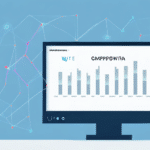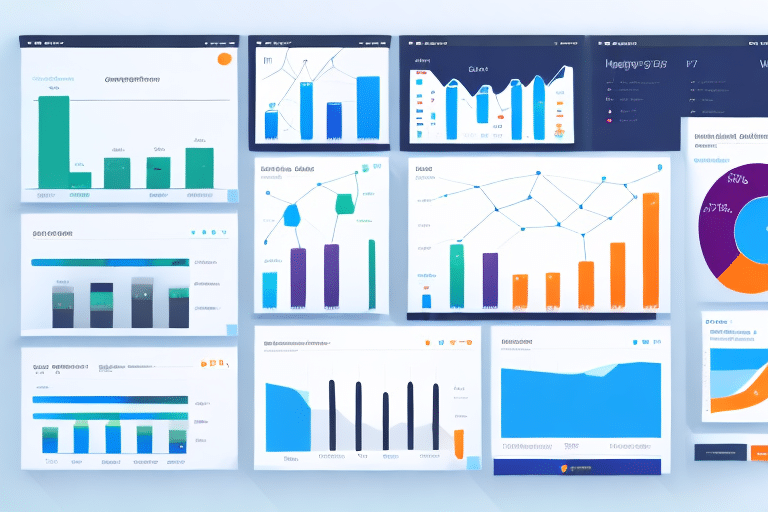Understanding Page Views: Measuring and Maximizing Impact for E-Commerce Success
In the competitive world of e-commerce, tracking the right metrics is crucial for business growth and success. Among these metrics, page views stand out as a fundamental indicator of website performance. Page views represent the number of times a specific page on your website is viewed by users. For e-commerce businesses, comprehending page views is essential not only for monitoring website traffic but also for analyzing user behavior and enhancing conversion rates. This article delves into the intricacies of page views, exploring their measurement, significance, and strategies to leverage page view data for optimal business outcomes.
Importance of Page Views for E-Commerce Businesses
Page views offer valuable insights into user interactions on your website. By tracking how often pages are viewed, businesses can:
- Identify Popular Content: Determine which products or information pages attract the most attention.
- Optimize Website Design: Enhance site navigation and layout based on user preferences.
- Refine Marketing Strategies: Tailor advertising efforts to highlight high-traffic areas.
- Measure Content Effectiveness: Assess which content drives user engagement and conversions.
Additionally, page view data can help pinpoint technical issues. A sudden drop in views on a particular page might indicate problems with page loading times or accessibility, allowing businesses to address these issues promptly and improve the overall user experience.
Understanding Page Views: Definition and Calculation
At its core, a page view is recorded every time a user loads or refreshes a page on your website. Importantly:
- Refreshing a page multiple times by the same user counts as multiple page views.
- Navigating away from and then returning to a page also adds to the page view count.
While page views are a useful metric for gauging the popularity of individual pages, they differ from unique visitors, which measure the number of distinct users accessing the site. Understanding both metrics provides a more comprehensive view of website traffic and user engagement.
The Role of Page Views in Assessing Website Traffic
Page views serve as a primary metric for evaluating website traffic. They offer a snapshot of:
- Overall visitor engagement
- Effectiveness of specific pages in retaining user interest
- Trends in user behavior over time
However, it's important to consider page views alongside other metrics like bounce rate, time on page, and conversion rates to gain a holistic understanding of website performance.
Tracking Page Views: Tools and Best Practices
Accurate tracking of page views is essential for reliable data analysis. Here are some best practices and tools to consider:
Utilizing Web Analytics Tools
Tools like Google Analytics, Adobe Analytics, and Clicky provide robust features for tracking and analyzing page views:
- Google Analytics: Offers comprehensive tracking features and integrates well with other Google services.
- Adobe Analytics: Provides advanced analytics capabilities suitable for larger enterprises.
- Clicky: Known for real-time analytics and user-friendly interface.
Implementing Accurate Tracking Codes
Ensure that tracking codes are correctly implemented on all website pages. Misconfigured codes can lead to inaccurate data, affecting decision-making processes.
Regularly Reviewing and Updating Tracking Settings
Stay updated with the latest tracking methodologies and regularly audit your analytics setup to maintain data accuracy.
Unique vs. Total Page Views: Understanding the Difference
When analyzing page view data, it's crucial to distinguish between unique page views and total page views:
- Unique Page Views: Count the number of distinct users who have viewed a page, regardless of how many times they visit it.
- Total Page Views: Sum all page views, including multiple views by the same user.
Using both metrics provides insights into user loyalty and content engagement. For instance, a high number of total page views with a lower number of unique page views may indicate that users find specific content repeatedly valuable.
Leveraging Page View Data to Enhance User Experience
Page view data can inform strategies to improve the user experience:
Optimizing Navigation and Layout
Identify the most visited pages and ensure they are easily accessible through intuitive navigation menus and clear layout structures.
Improving Content Quality
Assess which content resonates most with users and invest in creating similar high-quality content to maintain engagement.
Reducing Bounce Rates
Analyze pages with high bounce rates to identify and address potential issues, such as irrelevant content or slow loading times.
Optimizing Pages for Increased Page Views
To boost page views, consider the following optimization strategies:
- Enhance Content Relevance: Create valuable and relevant content that meets the needs of your target audience.
- Implement Internal Linking: Use internal links to guide users to related content, increasing the chances of additional page views.
- Improve Page Load Speed: Faster-loading pages enhance user experience and encourage users to explore more content.
- Ensure Mobile Friendliness: Optimize your website for mobile devices to cater to the growing number of mobile users.
Analyzing Page View Data: Best Practices
Effective analysis of page view data involves:
- Monitoring Trends Over Time: Observe how page views change over different periods to identify patterns and seasonal impacts.
- Segmenting Data: Break down data by demographics, device types, or traffic sources to gain deeper insights.
- Setting Benchmarks: Establish performance benchmarks to measure the effectiveness of optimization efforts.
- Integrating with Other Metrics: Combine page view data with metrics like conversion rates and user engagement for a comprehensive analysis.
Interpreting Bounce and Exit Rates in Context of Page Views
Bounce and exit rates are closely related to page views and provide additional layers of understanding:
- Bounce Rate: The percentage of visitors who navigate away after viewing only one page. A high bounce rate may indicate irrelevant content or poor user experience.
- Exit Rate: The percentage of visitors who leave your site from a specific page after viewing others. This helps identify particular pages where users decide to exit.
Monitoring these rates alongside page views helps in identifying problem areas and opportunities for enhancing user engagement.
The Impact of Page Views on Conversion Rates
There is a direct relationship between page views and conversion rates. Understanding this relationship helps in:
- Optimizing Sales Funnels: Identify which pages in the sales funnel are performing well and which need improvement.
- Enhancing User Journeys: Create seamless transitions between pages to guide users towards conversions.
- Personalizing Marketing Efforts: Use page view data to tailor marketing messages based on user interests and behaviors.
By analyzing how page views correlate with conversions, businesses can refine their strategies to increase sales and revenue.
Utilizing Page View Data for Targeted Marketing
Page view data can significantly enhance marketing strategies:
- Targeted Campaigns: Develop marketing campaigns focused on the most viewed and engaging pages.
- Content Personalization: Tailor content recommendations based on users’ browsing history and preferences.
- Retargeting Efforts: Implement retargeting strategies for users who have viewed specific pages but haven't converted.
Leveraging page view data ensures that marketing efforts are aligned with user interests, increasing the likelihood of successful engagements.
Common Pitfalls in Analyzing Page View Data
Avoid these common mistakes to ensure accurate analysis:
- Relying Solely on Page Views: Use page views in conjunction with other metrics for a well-rounded analysis.
- Ignoring Contextual Factors: Consider external factors like marketing campaigns or seasonal trends that may impact page views.
- Neglecting Data Segmentation: Failing to segment data can obscure important insights related to different user groups.
- Overlooking Data Accuracy: Ensure tracking codes are correctly implemented to avoid inaccuracies in page view data.
Conclusion: The Essential Role of Page Views in E-Commerce Success
In summary, page views are a fundamental metric for e-commerce businesses seeking to understand and enhance their online presence. By diligently tracking and analyzing page view data, businesses can gain critical insights into user behavior, optimize website performance, and refine marketing strategies to drive conversions. Consistent monitoring and strategic utilization of page views enable e-commerce operations to make informed, data-driven decisions that foster growth and success in a competitive digital marketplace.






















